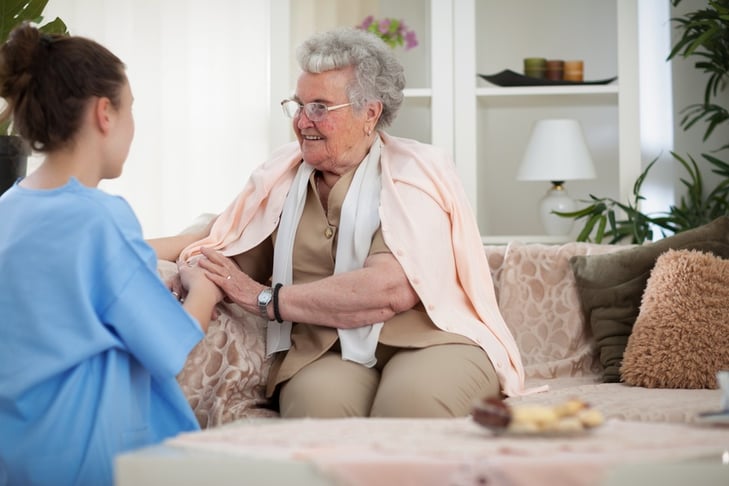If you've recently found yourself in the position of having to care for an elderly loved one, one of your first steps should be to draft a caregiving plan.
Why? Because, as the famous Boy Scout motto goes, it’s always best to “be prepared.”
As your loved one ages in place, you may find that his or her circumstances change rapidly — especially if he or she is living with mid- to late-stage dementia or Alzheimer’s disease. That means you need to be ready to act in your relative’s best interest, should he or she ever become unable to make decisions independently.
Having a plan in place ensures the whole family will be on the same page and focused on what’s best for your parent or grandparent. It can give you all more peace of mind to know that some decisions have been made beforehand.
You should work with your loved ones in advance to come up a caregiving plan that will help you move decisively and effectively, with a minimum of hand-wringing, as your elder’s circumstances change.
But what does a caregiving plan look like? Is there an easy template your family could follow as it develops one for your elder?
There sure is. Today, we’re going to give you one. Read on, and be sure to share this with friends who are also family caregivers:
1. Identify the care team members.
Simply put, it’s too difficult for one person to shoulder the entire burden of care. You’re going to help from family members, friends, faith-based and/or community-based resources.
Will you be serving as the primary caregiver for your aging parent or grandparent? Then you should take the lead on delegating responsibilities, coordinating necessary documentation and “quality control.”
Who else is onboard? Who will serve as your loved one’s medical power of attorney (PoA)? Financial PoA? What roles will your siblings, spouse, partner, or children take on?
In your written plan, list each member of the care team, his or her contact information, his or her responsibilities and the days and times those responsibilities are to be carried out.
2. List the training and resources you’ll need.
Will any members of your loved one’s care team require training to carry out their designated responsibilities? Such training could include providing proper hygiene support, performing basic medical services like managing medications, giving injections or monitoring blood sugar.
Will your parent or grandparent need any medical equipment or lifestyle aids to safely age in place? Will you need to remodel his or her room, or modify the house to make it more dementia-friendly?
If so, you’ll need to determine who is providing which level of care, ensure that each volunteer is appropriately versed, and obtain the equipment and resources you’ll need. Every item should be discussed in your care plan — what it’s for, who can use it, how it is used, etc.
3. List “desires” and “musts.”
Should the time come when your loved one is no longer able to direct his or her own care decisions, and residential nursing or memory care placement becomes necessary, it’s best to have expectations mapped out.
To that end, your care plan should include a list of attributes that any memory care center or senior home must have, for it to be acceptable for your loved one. Maybe he or she really wants to live close to the grandkids, or prefers one Cincinnati retirement home over all others?
Expectations like those should be written down and agreed upon by all parties — your parent or grandparent included — at the start of the caregiving relationship.
4. Write down benchmarks for placement.
Your elderly loved one might start off aging in place with assistance, or living in your home and receiving full-time family care. But when will placement be considered?
It’s a good idea to sketch out a series of benchmarks that you, your loved one, and the all members of the care team can agree to use as benchmarks for a change in the living arrangement. If these are agreed upon at the start, there’s less chance for arguments, blaming, or “placement shaming” later.
5. Include a shared calendar or checklist to help you coordinate care.
As the weeks and months go by, scheduling conflicts will certainly crop up among members of the care team. But, in this brave, new digital world, they’re easier to deal with if everyone has access to a shared mobile calendar and a common forum for communication.
List out daily and weekly responsibilities in a Google doc or caregiver application. Whichever digital application you choose, make sure everyone has downloaded it and understands how to use it.
Then, create a closed Facebook group or Facebook Messenger discussion group, where all the members of your loved one’s care team to communicate openly and instantaneously.
Caregiving is easier to manage when it’s well organized.
Use the tips above to create a caregiving plan that you, your elder, and all the members of the family care team can agree on, understand and stick to.
With a plan in place, your loved one can safely age at home, and the whole family can be ready to act when circumstances change, or when residential placement becomes necessary.














